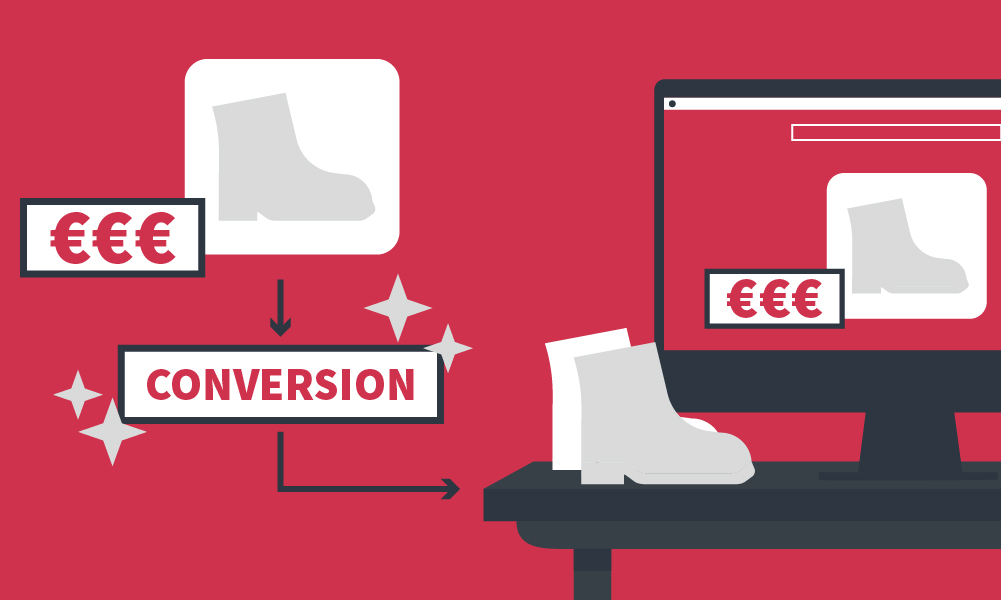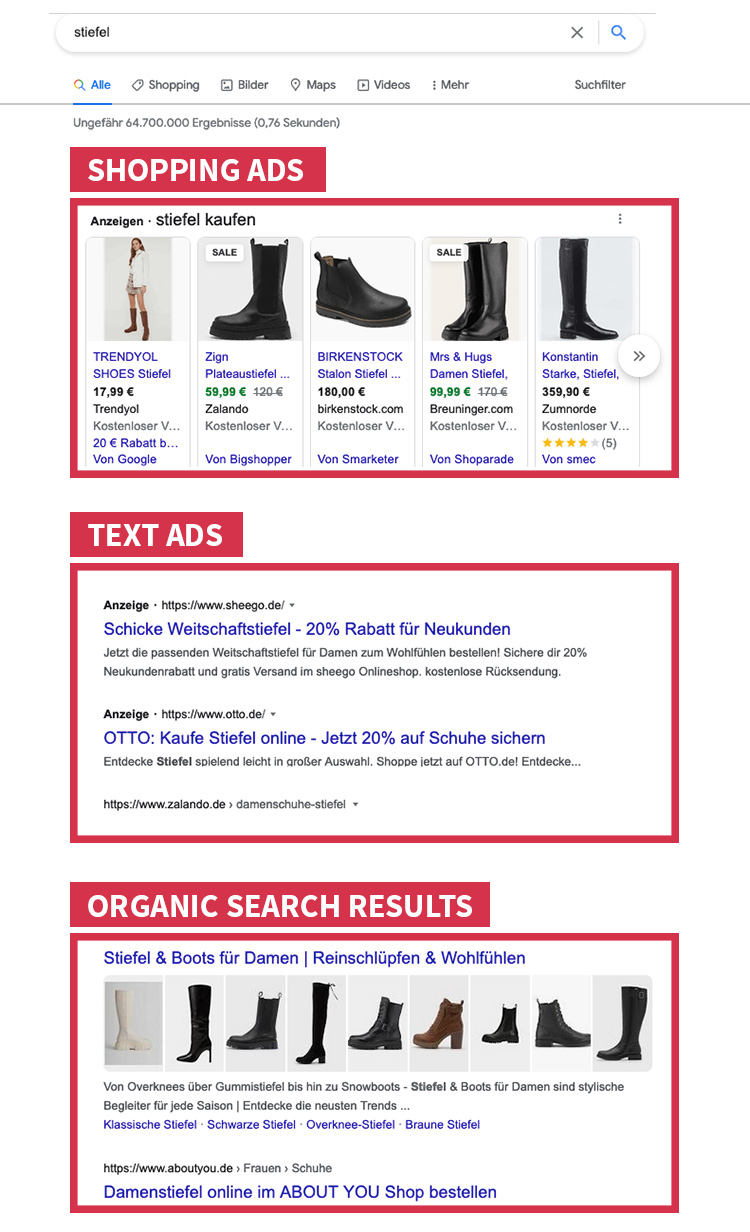
In part three of our series on search engine marketing, we explore the question of when search engine advertising, or SEA for short, makes sense and what benefits it can bring companies.
In the last part of our article series, we looked at search engine optimization (SEO) and learned that in marketing, you can’t get past Google, the biggest search engine. But Google has been more than that for quite some time. The company primarily raises its money by placing ads.
Even if you use another search engine, you have most likely come across a Google Ad. Google’s display network has an enormous reach. Over 90% of Internet users worldwide can be reached through it. Among the more than 2 million websites and apps that the network includes is YouTube, the largest platform for video content in the world.
What is this article about?
So that you know best, we have linked the most important terms to our SEO and SEA glossary.
Search engine advertising (SEA) is a part of search engine marketing (SEM) that ensures the visibility of a website in the paid search results (SERPs) of search engines.
The aim of SEA is to encourage website visitors to take action (conversion) by means of advertisements. For this to succeed, the ads must be tailored as well as possible to the target group. That’s why researching the right keywords comes first.
When it comes to keyword advertising, it pays off to look at the search intent of your target group. In this way, you can find the relevant keywords – both for placing ads and for SEO and kill two birds with one stone.
Once the right keyword has been found, the first important step has been taken to play at the top with your ad.
The first positions in the ranking on Google, Bing, Yahoo! and other search engines are clicked on particularly often and receive the greatest attention. Ads are placed before or after the organic search results and are not immediately distinguishable by many Internet users. Text ads are only separated from the organic results by the small note “ad”.

Example: German Google ads for the keyword “Stiefel”
Some ads are visually highlighted and may include images or videos in addition to text. Organic search results can also be presented with image and video content (keyword: rich snippet), but ads such as shopping ads support the sale of products and services quickly and in the short term. With SEO, the results are visible only over a longer period of time.
Google or the advertising provider selects and positions the ads depending on various factors. Advertisers bid on the desired keywords in an auction. The minimum bid for a search term is a few cents or several euros, depending on demand. In addition to the bid, the ad and page quality also play a role in the selection and order.
Often search engine advertising is understood as a counterpart to search engine optimization. However, the two sub-areas of search engine marketing should not be thought of as rivals. Rather, they should be seen as a synergy – one hand washing the other.
Many marketers initially focus on SEA campaigns and later adjust or discontinue them as soon as SEO measures take effect and achieve rankings. This strategy is particularly suitable for new topics that need to achieve rapid visibility.
Since the cost of ads is also based on the quality factor of the landing page, search engine optimization can also have a positive impact on SEA – a classic win-win situation.
There are various forms of payment for SEA. The usual one at Google is pay-per-click (PPC). Here, costs are incurred only when users click on the ad. One exception is video ads, which are usually charged according to CPV (cost-per-view) or per impression. Everything from 30 seconds counts as a view.
There are different types of ads that can be booked and customized depending on the objective and budget. Google calls them campaigns. The types of ads that can be booked are also comparable at Microsoft Advertising, where ads are displayed on Bing, AOL and Yahoo! among others. However, because Google is the market leader in the SEA sector, we are primarily oriented towards the Ads colossus.
Unlike Google, Bing Ads are also played out in the X-Box Live gaming platform.
SEA can provide short-term, quick attention as well as support organic rankings in the long-term, increasing brand awareness.
When your ad is displayed for the relevant keywords, you should see more visits to your website within a short time, converting more prospects to customers.
Our conclusion: search engine advertising has become indispensable in online marketing. Since there are many different options for search engine advertising and every company is as individual as its target group, there is not one magic solution here.
To ensure that you find exactly the right one for your products and services, we will be happy to work with you to develop an optimal search engine marketing strategy.